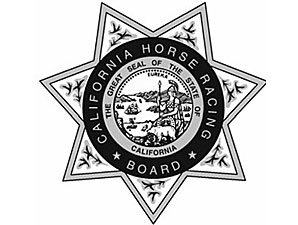CHRB Resumes Talks on Golden Gate's Future

One day after Golden Gate Fields threatened closure during a California Horse Racing Board session to modify Northern California racing dates, the Bay Area track's future was again the top subject at the CHRB's main gathering April 16.
BALAN: Golden Gate Threatens Closure at CHRB Session
A discussion at the track Thursday about Golden Gate's marketing plan for the future quickly turned to issues regarding the viability of racing as a whole in California, and raised questions as to how the Northern California track fits in.
Among Golden Gate's plans for the future is the addition of high definition broadcasts, as well as the use of the Trackus technology that is being used at Santa Anita Park, but the issues the oval faces kept being brought up, including bettors not wanting to wager on synthetic surfaces, short fields, and declining on-track attendance.
"Our brand is unique to ourselves, but our problems are not unique to our race track," said Dan Cirimele, the senior director of marketing for Golden Gate and Santa Anita. "These problems are facing any track in the United States."
Cirimele, who identified himself as a "rare breed," being a "millennial who actually likes horse racing," then got peppered with questions from the board's commissioners about not only Golden Gate's plan for the future, but for the future of the sport itself.
"How many get hooked?" CHRB commissioner Jesse Choper said, asking about marketing efforts to aquire new, younger customers. "That's the real question."
"When it comes to that golden ticket, about how we get young people out to the races, Golden Gate probably does the best job of the tracks that I've been to," Cirimele responded.
Golden Gate, which is owned by The Stronach Group, also received criticism from horsemen in attendance and from California Thoroughbred Trainers executive director Alan Balch, who said the marketing for Golden Gate has been unsatisfactory. Balch also suggested the CHRB conduct a symposium to address those issues.
"If The Stronach Group, Golden Gate Fields, and Santa Anita do not see marketing as a necessary investment, the sport is not going to grow," Balch said. "There are a great many lives at stake, livelihoods, and economics beyond the economics of The Stronach Group... This is the fifth-biggest market in the United States. There is no excuse to not invest in it and draw people... You have to tell people about it, you have to excite people about it, you have to compete. I don't see the competition. I don't see the willingness to compete."
With the threat of Golden Gate shutting its doors fresh in everyone's consciousness, members expressed an urgency to resolve the venues problems. Commissioner Madeline Auerbach, after looking at Golden Gate's marketing plans, called them "depressing."
"If we are just here to watch the demise of Golden Gate Fields, then shame on us," Auerbach said. "We need Golden Gate. We need it to be strong and we need it to be vital. I would hate to see California racing without it, because without Golden Gate, I don't think you have the fairs any more. It would become a third-world country in horse racing... I don't know what to do, or what to say, or who to discuss it with. I'm frankly depressed."
"You can go back to your generation," CHRB executive director Rick Baedeker said to Cirimele, "and say, 'Help us reinvent this thing'... I think we're dysfunctional."
Another notable happening during the CHRB session included the announcement that the rule approved in 2014 to limit the overuse of the whip by jockeys would be enacted and enforced in California beginning July 1. The rule will no longer allow jockeys to strike a horse more than three consecutive times without giving the animal a chance to respond.
SHINAR: Whip Use by Jockeys Restricted in California
The board also approved proposals, which would add penalties for the use electric shocking devices and the use of cobalt, to be sent out for a 45-day public comment period.
